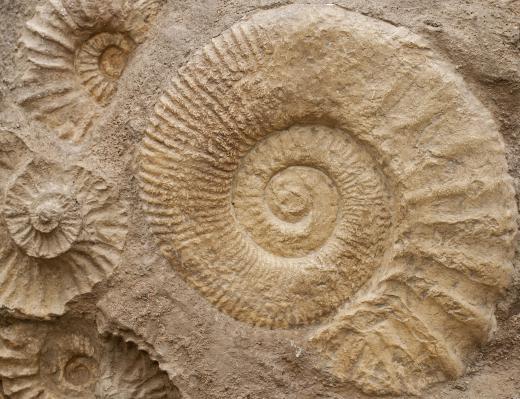What is the First Bilateral Animal?
 Michael Anissimov
Michael Anissimov
The first body fossil of a bilateral animal is Vernanimalcula ("small spring animal"), a simple metazoan that lived between 580 and 600 million years ago, during the Ediacaran period. Vernanimalcula was discovered in 2005 in a phosphatic fossil deposit in Guizhou Province, China, called the Doushantuo Formation. Phosphatic fossils are extremely detailed, with features on the microscopic level, permitting analyses impossible with other fossil types. A minority of scientists argue that Vernanimalcula is a taphonomic artifact, caused by the intrusion of phosphate into an inorganic or unicellular spherical object, but the majority consider it a genuine fossil of a bilateral animal.
Most animals are bilateral, meaning they are symmetric around a central axis. Exceptions include the sponges, which have no symmetry, the cnidarians (jellyfish and relatives), which have radial symmetry, and a few echinoderms (starfish and relatives) with have pentaradial symmetry, but evolved from bilateral ancestors. The rest of animals are bilateral.

Vernanimalcula is a small (0.1 - 0.2 mm) oval-shaped fossil. It has a mouth, a gut, and several surface pits which may be sensory organs. If it is indeed a real animal and not a taphonomic artifact, Vernanimalcula would have had a few hundred cells. It may have been eutelic, like many modern microfauna, meaning that every adult individual had the same number of cells, and it only grew in size as the cells themselves expanded. Vernanimalcula is thought to have been tripoblastic, meaning, like most modern animals, its body consisted of three layers, an ectoderm, mesoderm, and endoderm.
The discovery of early bilateral animals like Vernanimalcula has taught scientists some interesting facts about the evolution of bilateral animals in general. First, Vernanimalcula is a coelomate, meaning it possesses a body cavity. This is evidence that coelomates were the first multicellular animals, and acoelomates (like nematodes) evolved from coelomates rather than the other way around.
There is some circumstantial evidence of tripoblastic bilateral animals even prior to 600 million years ago, in the form of trace fossils from India and the decline of microbial towers called stromatolites over a billion years ago, suggesting the possible presence of grazing organisms, which may have been bilateral animals.
AS FEATURED ON:
AS FEATURED ON:











Discuss this Article
Post your comments